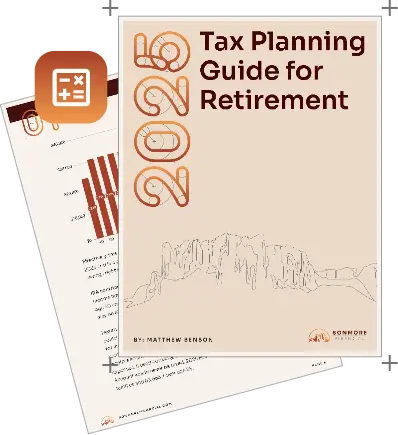Table of contents
One of the biggest concerns early retirees have is paying for health insurance. The Affordable Care Act gave rise to The Premium Tax Credit (PTC), which can be a helpful tool to address this gap between retirement and Medicare at age 65. If you do the proper planning, you may be able to qualify for discounted health insurance before age 65. In this post, we discuss what the Premium Tax Credit is and how you can strategize your retirement income to qualify.
If your household income falls within 100% to 400% of the federal poverty level for a household of your size, you will receive a refundable tax credit to subsidize the cost of a health insurance plan through the Health Insurance Marketplace. If your income is on the lower side of the spectrum, the government will send you money in advance to pay for the cost of the plan.
You don’t have to live off $20,000/yr to make this work. This is because not all distributions are taxed the same way. Taking money from your savings account is taxed differently than a non-retirement account and is different than taking a distribution from your IRA or Roth IRA.
When qualifying for PTC, the most important factor is household income. But household income is not the same as spending money. This means there are multiple ways we can take distributions to manage to a targeted household income as it relates to the Premium Tax Credit.
The following inflows would not be considered income for PTC:
- Net $0 gains from taxable accounts. For example, we can sell a position with a $5,000 of long-term capital gain for gross proceeds of $25,000 ($20,000 cost basis) and $5,000 of long-term capital loss for gross proceeds of $15,000 ($20,000 cost basis) to arrive at a gross distribution of $40,000 with $0 tax consequence.
- Loans. Whether that be a loan against a life insurance policy, a securities loan, or HELOC
- Roth IRA distributions
- Cash
With these things in mind, we can now walk through how this works.
Suppose the following:
– 60-year-old couple is retiring and lives in Maricopa County in Arizona
- Non-tobacco
- No kids on plan
- They can have income of $50,000 and pay about $320/mo for a silver plan with a $6,000 deductible (determined using the Healthcare.gov calculator)
– Main income earner receives a severance package of $100,000 that was paid in the previous tax year
– They have $100,000 in cash reserves of which $50,000 is their emergency fund
– An IRA worth $1,500,000
– A taxable brokerage account of $300,000, of which $100,000 is gain (cost basis of $200,000)
- We’ll assume distributions from here are equal part basis and gain though you could and would be strategic in pulling distributions to distribute more from basis than gain to be more tax efficient
– They need $80,000 a year to pay living expenses and retirement expenses
– They will qualify for Medicare in 5 years
Below is a breakdown of one way they could accomplish these objectives. This process would then be accessed and repeated in the following 4 years until Medicare at 65.
- $30,000 from their brokerage account
- $10,000 would be taxable
- $10,000 from their severance pay/cash
- no tax consequence since the severance pay would have been taxed in the previous year they retired
- $40,000 from their IRA
- $40,000 taxable
– This would arrive at covering their $80,000 living expense need and their $50,000 household income target for PTC.
Depending on a family’s objectives, you may take more from different buckets than others. Regardless, this gives you a simple illustration of how you can meet your annual expense need, but also satisfy the lower household income target.
In this scenario, the family might consider investing some of their excess cash into their non-retirement account or spending more from that in the initial couple years and converting funds from their IRA to a Roth IRA.
Sometimes retirement is postponed due to the fear of having to pay astronomical prices for health insurance but that doesn’t have to be the case. If you’d like some help thinking through your situation, we are happy to be a resource.




